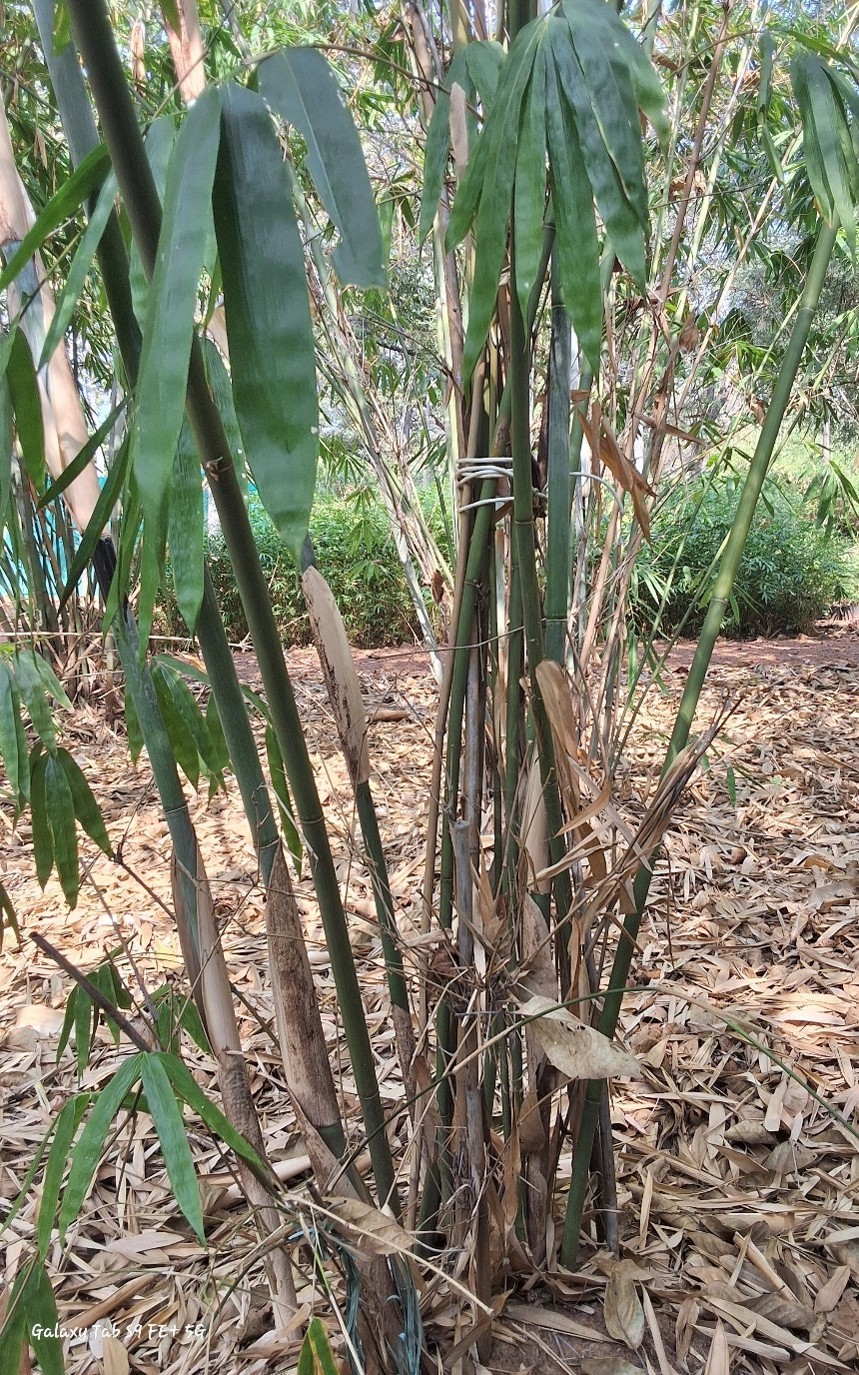Dendrocalamus longispathus

Dendrocalamus longispathus
Dendrocalamus longispathus commonly known as Long-spathed Bamboo, is a clumping bamboo species native to the Indo-Malay region, specifically India, Myanmar, and parts of Southeast Asia. It grows in tropical and subtropical climates, typically found at altitudes ranging from 200m to 1,200m. This bamboo reaches a height of 10 to 18 meters with a diameter of 8 to 12 cm. The culm is green initially with a yellowish tinge as it matures, and the internodes range from 30 to 50 cm. The culm sheath is green when young, turning brownish as it matures, with a smooth and glabrous adaxial surface, slightly hairy abaxial surface, and ciliate margins.
Dendrocalamus longispathus thrives in areas with annual rainfall ranging from 1,200 mm to 2,500 mm. It grows well in a variety of soil types, including clay, loamy, and well-drained soils with good fertility. The bamboo is commonly found in tropical forests, moist river valleys, and on mountain slopes.
The leaves of Dendrocalamus longispathus are lanceolate to elliptic in shape, measuring 20 to 35 cm in length and 3 to 5 cm in breadth, with long pointed tips. The inflorescence is a large, terminal panicle with long, thin branches. The empty glumes are small, ovate to lanceolate, and have prominent veins, while the flowering glumes are larger, with smooth or slightly hairy edges. The stamens are exserted, and the anthers are glabrous, with a hairy style. Flowering is infrequent, occurring every 30 to 40 years, and is reported sporadically in regions like India and Myanmar.
Seed production is rare due to the long flowering cycles, and seeds tend to be short-lived. Dendrocalamus longispathus is propagated through culm cuttings, clump division, offsets, and tissue culture.
This bamboo is highly valued for its strength and is used in construction for making poles, scaffolding, and structural supports. Additionally, it is used to create furniture, handicrafts, and decorative pieces. Its long and strong fibers make it suitable for pulp and paper production. The young shoots are edible and consumed in certain regions. The bamboo's dense, energy-rich wood is used as a source of fuel in rural areas. Moreover, Dendrocalamus longispathus helps in soil erosion control, making it suitable for stabilization projects in areas prone to landslides.
Listen Audio:
Need assistance? BRTC Faculty